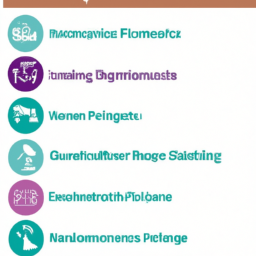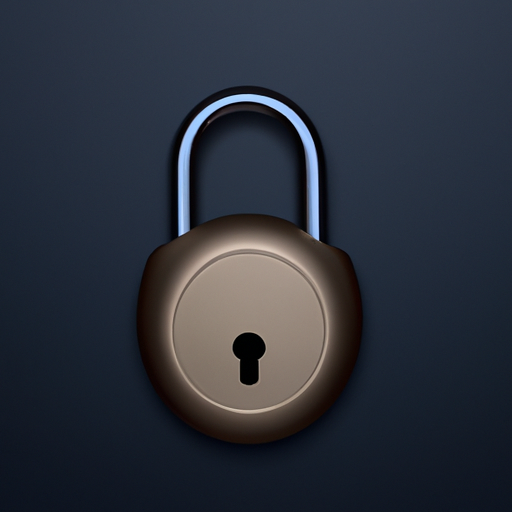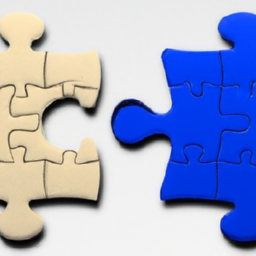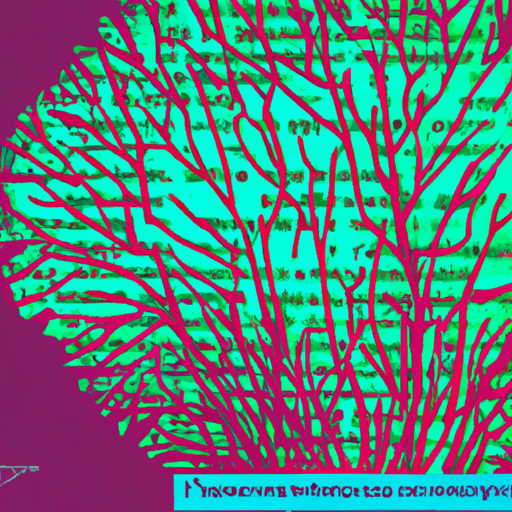How Do Emerging Technologies Like IoT Impact Our Continuity Planning?
In the fast-paced world we live in, it is crucial for businesses to prioritize their continuity planning. But have you ever wondered how emerging technologies such as the Internet of Things (IoT) play a significant role in shaping and enhancing this planning? From streamlining operations to improving communication and data analysis, the integration of IoT has revolutionized the way we approach and manage business continuity. By providing real-time updates, increased connectivity, and enhanced automation, IoT is empowering organizations to effectively respond to disruptions and ensure their long-term survival.
Importance of Continuity Planning
Continuity planning is a crucial aspect of any organization’s strategy, as it ensures that essential business functions can continue to operate smoothly in the face of unexpected disruptions. Whether it’s a natural disaster, a cyber attack, or a public health crisis, having a well-developed and effective continuity plan is essential to minimize downtime, safeguard critical operations, and protect the organization’s bottom line.
In today’s rapidly evolving digital landscape, the emergence of Internet of Things (IoT) technology has brought about profound changes in how businesses approach continuity planning. IoT refers to the vast network of interconnected devices that can communicate and share data with each other over the internet, without human intervention. This technology has revolutionized various industries and has the potential to significantly enhance continuity planning efforts across sectors.
Understanding IoT and its Role
Definition and Overview of IoT
IoT refers to a network of objects, devices, and systems that are equipped with embedded sensors, software, and connectivity capabilities, allowing them to collect and exchange data. These devices range from everyday objects like refrigerators and thermostats to complex industrial equipment and infrastructure such as power grids and transportation systems. The data collected by these devices can be analyzed to gain valuable insights, drive operational efficiencies, and enable informed decision-making.
Key Components of IoT
At the heart of IoT are the interconnected devices that form the network. These devices, often referred to as “smart” devices, are equipped with sensors to collect real-time data, connectivity capabilities to transmit this data to other devices or cloud storage, and software or embedded systems to process and analyze the data. Additionally, IoT relies on a robust infrastructure of communication protocols, data storage systems, and analytics tools to enable seamless connectivity, data processing, and meaningful insights.
Applications of IoT
The applications of IoT are vast and span across numerous industries. In healthcare, IoT enables remote patient monitoring, personalized healthcare delivery, and efficient emergency response systems. In transportation, IoT facilitates real-time asset tracking, route optimization, and vehicle maintenance. In the industrial sector, IoT enables predictive maintenance, fault detection, and process optimization. From cities to factories to homes, IoT has the potential to transform the way we live, work, and interact with our environment.
Implications of IoT in Continuity Planning
The integration of IoT into continuity planning has significant implications for organizations aiming to enhance their readiness and resilience in the face of disruptions. Here are a few key implications of IoT in continuity planning:
Increased Data Collection and Analysis
With IoT, organizations can collect vast amounts of real-time data from interconnected devices. This data can provide valuable insights into potential disruptions, allowing organizations to anticipate and mitigate risks proactively. By analyzing this data, organizations can identify patterns, detect anomalies, and make data-driven decisions to strengthen their continuity planning strategies.
Enhanced Monitoring and Detection
IoT sensors and devices enable continuous monitoring of critical infrastructure and assets. This real-time monitoring facilitates early detection of issues, enabling prompt intervention and minimizing the impact of disruptions. For example, in manufacturing facilities, IoT sensors can detect abnormalities in equipment performance, enabling predictive maintenance and preventing costly breakdowns.
Improved Communication and Collaboration
IoT facilitates seamless communication and collaboration between different stakeholders involved in continuity planning. By connecting various devices and systems, IoT ensures that relevant information on the status of operations, resources, and potential disruptions is readily available to all stakeholders. This improves coordination and enables swift and effective decision-making during crisis situations.
Automation and Remote Management
IoT enables automation of various processes, reducing reliance on human intervention and improving the efficiency of continuity planning efforts. For example, in the event of a disaster, IoT-enabled systems can automatically trigger backup protocols, redirect resources, and initiate recovery processes. Additionally, remote management capabilities provided by IoT allow organizations to monitor and control critical operations from anywhere, ensuring continuity even in challenging circumstances.
Challenges in Incorporating IoT into Continuity Planning
While IoT presents significant opportunities for improving continuity planning, there are several challenges that organizations must address when incorporating IoT into their strategies. These challenges include:
Security and Privacy Risks
As IoT devices collect and transmit sensitive data, security and privacy risks are of paramount concern. The decentralized nature of IoT networks and the sheer number of devices increase the potential attack surface, making them vulnerable to cyber threats. Organizations must implement robust security measures, such as encryption, authentication protocols, and regular updates, to safeguard against data breaches and unauthorized access.
Interoperability and Integration Issues
IoT devices often come from multiple vendors, each with their own protocols and standards. This lack of interoperability can pose challenges when integrating IoT devices into existing continuity planning systems. Organizations must carefully evaluate the compatibility of different devices and ensure seamless integration to avoid disruptions and maximize the benefits of IoT technology.
Data Management and Analytics
The sheer volume and velocity of data generated by IoT devices pose challenges in terms of data management and analytics. Organizations must have robust data storage systems and analytics capabilities to effectively process, analyze, and derive meaningful insights from this influx of data. Additionally, data governance policies must be established to ensure data quality, integrity, and compliance with relevant regulations.
Cost and Resource Allocation
Implementing IoT technology and infrastructure can be a significant investment for organizations. From the acquisition of devices and sensors to the development of communication networks and analytics platforms, the cost of IoT integration must be carefully considered. Organizations must conduct a thorough cost-benefit analysis and allocate resources appropriately to ensure the successful incorporation of IoT into their continuity planning initiatives.
Best Practices for Integrating IoT into Continuity Planning
To effectively integrate IoT into continuity planning, organizations should consider the following best practices:
Identify Critical Processes and Assets
Start by identifying the key processes and assets that are critical for the organization’s operations and continuity. Understand how IoT can enhance the monitoring, management, and resilience of these critical components. By prioritizing the integration of IoT in these areas, organizations can maximize the impact of IoT technology on their continuity planning efforts.
Ensure Robust Security Measures
Prioritize security considerations when implementing IoT devices and systems. Implement strong authentication protocols, encryption techniques, and regular security updates for IoT devices to safeguard against cyber threats. Additionally, establish protocols for incident response and recovery in the event of a security breach, ensuring minimal disruptions to operations.
Establish Data Governance Policies
Develop comprehensive data governance policies to manage the influx of data generated by IoT devices. Ensure that data is collected, stored, and processed securely and in compliance with relevant regulations. Implement data quality assurance measures to ensure the integrity and accuracy of the data collected. Additionally, establish protocols for data sharing and access, ensuring transparency and accountability in data management practices.
Evaluate and Select Reliable IoT Solutions
Conduct thorough research and evaluation of IoT solutions before implementing them in continuity planning. Consider factors such as reliability, scalability, interoperability, and vendor support when selecting IoT devices and systems. Pilot projects and proof-of-concept initiatives can help identify the best-suited IoT solutions for the organization’s specific continuity planning requirements.
Case Studies on IoT-enabled Continuity Planning
Examining real-world case studies can provide insights into the practical applications and benefits of integrating IoT into continuity planning. Here are a few examples:
Industrial Sector: Predictive Maintenance and Fault Detection
In the industrial sector, IoT-enabled sensors can continuously monitor equipment performance and detect anomalies that may indicate potential malfunctions or breakdowns. This enables predictive maintenance, where maintenance interventions can be scheduled proactively, minimizing downtime and reducing maintenance costs. By leveraging IoT technology, organizations can improve the resilience of their critical infrastructure and ensure uninterrupted operations.
Healthcare Sector: Remote Patient Monitoring and Emergency Response
IoT technology has revolutionized healthcare by enabling remote patient monitoring. Wearable devices equipped with sensors can collect vital signs, track medication adherence, and alert healthcare providers in real-time about changes in patients’ health conditions. In the context of continuity planning, IoT facilitates swift emergency response, as healthcare providers can remotely monitor patients and intervene promptly in case of emergencies.
Transportation Sector: Real-time Asset Tracking and Route Optimization
In the transportation sector, IoT enables real-time asset tracking and route optimization, which is crucial for ensuring continuity in logistics and supply chain operations. Organizations can leverage IoT devices to track the location and condition of assets, optimize routes to minimize delays and disruptions, and proactively address issues such as vehicle maintenance or unexpected traffic congestion. These capabilities improve efficiency, reduce costs, and enhance the resilience of transportation operations.
Future Trends and Possibilities
As IoT technology continues to evolve, several trends and possibilities hold immense potential for further enhancing continuity planning efforts:
Advancements in Edge Computing
Edge computing involves processing and analyzing data closer to the source, minimizing the need for transmitting large amounts of data to distant cloud servers. This reduces latency, improves real-time decision-making capabilities, and enhances continuity planning by enabling faster response times and reducing reliance on centralized infrastructure.
Integration with Artificial Intelligence
By integrating IoT with artificial intelligence (AI), organizations can leverage the power of machine learning algorithms to analyze vast amounts of data collected by IoT devices. AI-powered analytics can identify patterns, detect anomalies, and generate predictive insights to enhance continuity planning strategies. This combination of IoT and AI can enable proactive risk management, efficient resource allocation, and seamless adaptation to changing circumstances.
Blockchain Applications in Continuity Planning
Blockchain technology, known for its secure and decentralized nature, has the potential to address some of the security and privacy concerns associated with IoT in continuity planning. Blockchain can ensure the integrity of data collected by IoT devices, facilitate secure transactions, and enable trusted collaboration between different stakeholders. By leveraging blockchain technology, organizations can enhance the resilience and trustworthiness of their continuity planning systems.
Ethical Considerations in IoT-enabled Continuity Planning
While IoT presents numerous benefits, it also raises important ethical considerations that organizations must address when incorporating it into continuity planning:
Data Privacy and Consent
The collection and utilization of personal data by IoT devices raise concerns about privacy and consent. Organizations must ensure that individuals’ data is collected and used in compliance with relevant regulations and that individuals are informed and have the option to consent or opt-out. Implementing privacy-enhancing measures and transparent data governance policies is crucial to address these concerns.
Bias and Discrimination
When applying IoT and AI technologies in continuity planning, organizations must be mindful of potential biases and discriminatory outcomes. Biased algorithms can perpetuate existing inequalities or contribute to unfair resource allocation. Organizations must regularly monitor and audit the performance of IoT-enabled systems to detect and mitigate biases, ensuring fairness and equality in continuity planning practices.
Transparency and Accountability
IoT-generated data can be complex, and the decision-making processes driven by this data may not always be transparent to stakeholders. Organizations must prioritize transparency and accountability by implementing clear communication channels, providing explanations for decisions, and enabling stakeholders to understand the basis for continuity planning strategies. This fosters trust and ensures inclusivity in decision-making processes.
Conclusion
The integration of IoT technology into continuity planning has the potential to revolutionize how organizations prepare for and respond to disruptions. By leveraging increased data collection and analysis, enhanced monitoring and detection capabilities, improved communication and collaboration, and automation and remote management, organizations can enhance their readiness and resilience. However, addressing challenges such as security risks, interoperability issues, data management complexities, and resource allocation is crucial. By adopting best practices, learning from case studies, and embracing future trends, organizations can unlock the full potential of IoT-enabled continuity planning while ensuring ethical considerations and safeguarding privacy. The future of continuity planning lies in harnessing the power of emerging technologies like IoT to build safer, more resilient organizations.








